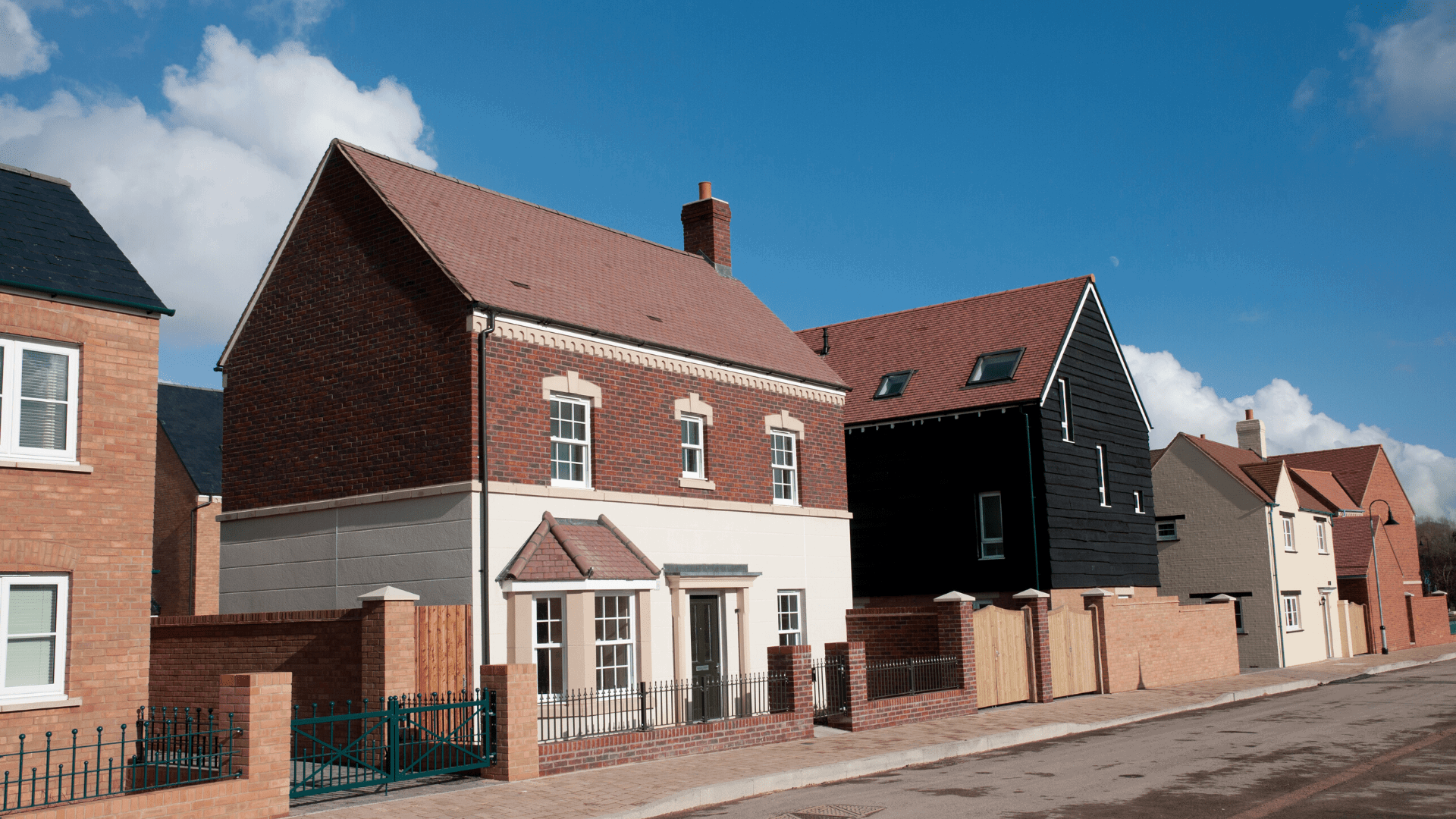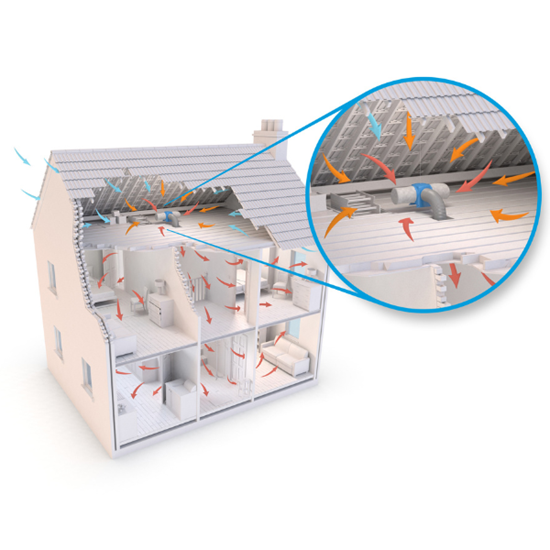

How Does PIV work?
PIV works by gently introducing fresher, filtered air into the dwelling from a suitably ventilated loft. Air is drawn into the unit and is passed through filters before being pushed around the home - as the air moves, it dilutes contaminants, displaces and eventually replaces the stale, humid air in the home.
Humid air is continuously moved out of natural leakage points throughout the home – such as windows, under doors or even through keyholes. PIV is a popular method of low-energy, whole-home ventilation, and is now installed in over 1 million homes in the UK.
There are different types of PIV systems, which have slightly different installation methods. For example, our Drimaster-Eco unit is installed in the loft and is ducted down to a diffuser in the ceiling, whilst our Flatmaster unit requires ducting from outside the property to a central location. Despite having different installation methods, both units work in the same way and achieve the same goal – providing fresh, filtered air to a property and curing condensation.
To find out more visit our Positive Input Ventilation product page, click on the button below.
How to Install your Drimaster-Eco
Drimaster-Eco, Positive Input Ventilation (PIV) system from Nuaire will treat your condensation dampness problems and improve your indoor air quality (IAQ). Follow our simple video guide and install your low-energy Drimaster-Eco system quickly and successfully. Visit our YouTube channel for the full video.
Your Drimaster-Eco PIV system is designed to be mounted in the loft space where it draws air through the G4 grade filters, and inputs it at ceiling level into the home. Positive pressurisation is the most effective method of retrofit whole-home ventilation and is a tried and trusted way to reduce condensation dampness.
The principle introduces a constant flow of filtered air into the home, which lowers humidity levels, reducing window and wall condensation and mould formation. It creates a dryer, lower allergen environment that is great for asthma and allergy-sufferers. The G4 grade filters are fine enough to prevent pollen entering the home - good news for hay fever sufferers.
The Drimaster-Eco heat model (DRI-ECO-HEAT-HC) has all the controls for the fan in the ceiling diffuser, so you can commission and adjust the settings without having to enter the loft. A 400w low-energy heater tempers the air delivered into your home. Electrically-controlled, it minimises energy-use. Drimaster-Eco features handy wireless controls and sensors which respond to changing humidity and CO2 levels, to ensure the best indoor air quality, and to help you save energy.
For further installation information please refer to the I&M document.
Frequently Asked Questions
We recommend that your PIV system is installed by a trained professional. For loft mounted units, your loft space will need to be suitably ventilated, party walls need to be intact and any ceiling holes need to be sealed. Extract fans will need to discharge to the outside and not into the loft. Our simple video guide provides step-by-step instructions for how to install our low-energy Drimaster-Eco system quickly and successfully.
Absolutely - in fact, Nuaire has an entire range of PIV units designed to ventilate homes without lofts. Nuaire’s Flatmaster system introduces air into the apartment at a continuous low rate, reducing condensation dampness and removing indoor pollutants such as radon gas and carbon monoxide. Allergens are kept to a minimum, and outdoor pollutants such as pollen are reduced. The result is a healthier indoor environment.
Nuaire’s PIV units are easily installed and designed to sit seamlessly within all property types, making very little noise and always providing the best quality air throughout your home.
Nuaire’s PIV units come with a 7 year warranty which includes parts and labour for the first year. The remaining period covers replacement parts only.
The warranty does not extend to damage caused by fair wear and tear, failure due to lack of maintenance or maltreatment, or if the installation is carried out contrary to the appropriate product instructions, to good engineering practice and to the recommendations of relevant governing bodies such as CIBSE, HVCA & FETA.








